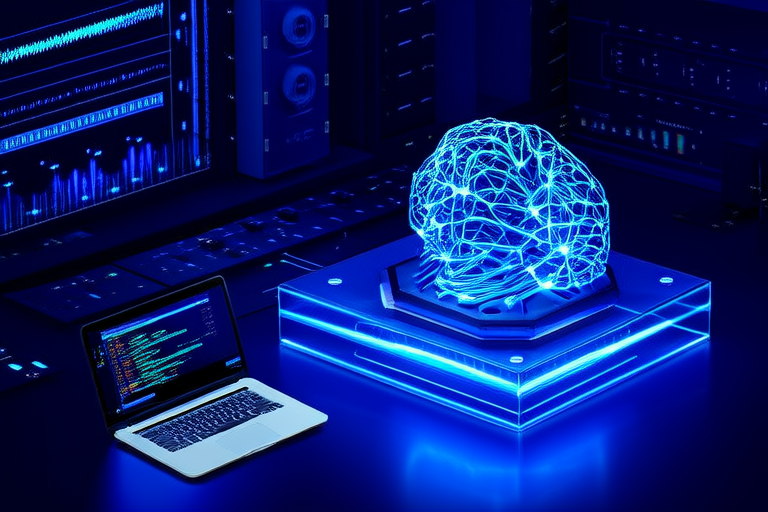The Future of AI: How Machine Learning and Deep Learning Are Reshaping Industries
Introduction
Artificial Intelligence (AI) has become an integral part of our daily lives, driving innovations across multiple sectors. At its core, AI refers to the simulation of human intelligence processes by machines, especially computer systems. Two key subsets of AI are machine learning and deep learning, which have been instrumental in enabling machines to learn from data and make decisions with minimal human intervention.
The increasing role of these technologies in shaping the future of industries cannot be overstated. From healthcare to finance, manufacturing to retail, and transportation to education, AI is revolutionizing the way businesses operate and interact with customers. This article explores how advancements in machine learning and deep learning are transforming various industries and what the future holds for these transformative technologies.
Understanding Machine Learning and Deep Learning
Defining Machine Learning and Deep Learning
Machine learning (ML) is a subset of AI that allows systems to automatically learn from data and improve over time without being explicitly programmed. It involves training algorithms on large datasets to identify patterns and make predictions or decisions based on those patterns.
Deep learning, on the other hand, is a more advanced form of ML that uses artificial neural networks to model complex relationships within data. These networks are inspired by the structure and function of the human brain and consist of layers of interconnected nodes, or neurons, that process information.
Differences Between Traditional Machine Learning and Deep Learning
Traditional machine learning techniques often rely on feature engineering, where humans manually extract relevant features from raw data before feeding it into algorithms. In contrast, deep learning automates this process by learning hierarchical representations of data through multiple layers of abstraction.
Another key difference lies in the complexity of tasks that can be handled. While traditional ML works well for simpler problems like linear regression or classification, deep learning excels at tackling more complex tasks such as image recognition, natural language processing, and speech synthesis.
Underlying Principles of Neural Networks
The foundation of deep learning lies in neural networks, which mimic the way biological neurons communicate. A typical neural network consists of an input layer, one or more hidden layers, and an output layer. Each node in a layer is connected to every node in the next layer, forming a web-like structure.
During training, weights are assigned to each connection between nodes, and these weights are adjusted iteratively to minimize errors in predictions. This process, known as backpropagation, enables the network to learn from its mistakes and gradually improve its performance.
Impact on Specific Industries
Healthcare
AI is revolutionizing the healthcare industry by improving diagnostics, personalizing treatment plans, and accelerating drug discovery. For instance, AI-powered tools can analyze medical images to detect early signs of diseases like cancer or Alzheimer’s, allowing for earlier interventions and better patient outcomes.
Personalized medicine is another area where AI is making significant strides. By analyzing vast amounts of genetic and clinical data, AI models can predict individual responses to different treatments, leading to more effective therapies tailored to each patient’s unique profile.
In drug discovery, AI helps researchers identify promising compounds faster and more accurately than traditional methods. Companies like Insilico Medicine are already using AI to design new drugs for various conditions, potentially saving years off the development timeline.
Finance
The financial sector has embraced AI to enhance fraud detection, optimize investment strategies, and manage risks more effectively. Fraud detection systems powered by AI can quickly analyze transaction patterns and flag suspicious activities in real-time, reducing the likelihood of fraudulent transactions.
Algorithmic trading, where computers execute trades based on predefined rules and market conditions, has also benefited greatly from AI. High-frequency trading firms leverage sophisticated ML models to predict price movements and execute trades at optimal times, generating substantial profits.
Risk management is another critical application of AI in finance. Insurance companies use predictive analytics to assess risks more accurately, while banks employ credit scoring models to evaluate loan applicants’ creditworthiness. This not only improves decision-making but also enhances customer satisfaction by providing timely and accurate services.
Manufacturing
In the manufacturing industry, AI is being used to streamline operations, reduce downtime, and improve product quality. Predictive maintenance, for example, uses sensor data and ML algorithms to anticipate equipment failures before they occur, allowing manufacturers to schedule repairs proactively rather than reactively.
Quality control is another area where AI is proving invaluable. Computer vision systems equipped with deep learning algorithms can inspect products for defects in real-time, ensuring consistent quality across production lines. Additionally, AI-driven supply chain optimization helps manufacturers forecast demand more accurately, reducing waste and improving efficiency.
Companies like Siemens and GE have implemented AI solutions to enhance their manufacturing processes, resulting in significant cost savings and increased productivity.
Retail
The retail industry is leveraging AI to create personalized shopping experiences, optimize inventory management, and improve demand forecasting. Personalization engines powered by AI recommend products based on customers’ browsing history, purchase behavior, and preferences, enhancing customer engagement and loyalty.
Inventory management is another critical application of AI in retail. By analyzing sales data and external factors like weather forecasts, AI models can predict future demand with greater accuracy, enabling retailers to stock appropriate quantities and avoid overstocking or understocking.
Several major retailers, including Amazon and Walmart, have successfully integrated AI into their operations, leading to improved operational efficiencies and enhanced customer experiences.
Transportation
Autonomous vehicles represent one of the most exciting frontiers in transportation, thanks largely to advances in AI. Self-driving cars use a combination of sensors, cameras, and deep learning algorithms to perceive their surroundings and navigate safely. Companies like Tesla and Waymo are at the forefront of developing fully autonomous vehicles that promise to revolutionize the way we travel.
Traffic management systems are also benefiting from AI, with cities around the world adopting intelligent traffic lights and congestion monitoring systems to optimize flow and reduce delays. Logistics companies are utilizing AI to optimize routes and delivery schedules, improving efficiency and reducing costs.
The future of transportation looks bright, with ongoing developments in electric vehicles, hyperloop technology, and drone delivery services all set to transform how goods and people move.
Ethical Considerations and Challenges
As AI continues to permeate各行各业,它带来了巨大的潜力,但也伴随着一系列伦理问题和挑战。数据隐私是其中一个重要方面。随着越来越多的个人和企业将其敏感信息上传到云端,确保这些数据的安全性和隐私性变得至关重要。此外,算法中的偏见也是一个值得关注的问题。如果训练数据存在偏差,那么生成的模型也可能产生不公平的结果,这可能导致歧视性的决策。
另一个重大挑战是就业市场的变化。虽然AI可以提高生产效率并创造新的工作机会,但它也可能导致某些岗位的流失。因此,政府和企业需要共同努力,通过教育和培训计划帮助工人适应新的经济现实。
为了应对这些挑战,制定适当的监管框架至关重要。透明度也是关键,确保公众了解AI系统的工作原理及其潜在影响。只有这样,我们才能在享受AI带来的好处的同时,最大限度地减少其负面影响。
Future Trends and Innovations
展望未来,AI、机器学习和深度学习领域将出现许多令人兴奋的趋势和创新。例如,强化学习(RL)是一种新兴的技术,它允许代理通过试错来学习如何采取最佳行动以实现特定目标。RL已经在游戏和机器人等领域取得了成功,并有望在更多领域得到应用。
量子计算也是一个值得关注的领域。量子计算机具有处理复杂问题的能力,这可能会极大地加速AI模型的训练过程。虽然这项技术仍处于早期阶段,但一旦成熟,它将为AI带来前所未有的计算能力。
此外,边缘计算的发展也为AI提供了新的机遇。通过在设备上本地处理数据,而不是将其发送到云端进行分析,边缘计算可以显著减少延迟并提高响应速度。这对于需要实时决策的应用程序来说尤为重要。




